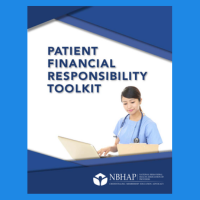Advocacy Alert: 2021 Year End Advocacy Update
December 23, 2021
Did you know that one of the many benefits BHAP members get is regular access to our advocate in Washington, DC, Andrew Kessler. This includes a monthly alert that is available to members only.
Below is a year in review alert by Andrew that is viewable by everyone, in order to show those of you who aren't members what you're missing.
As the BHAP advocate in Washington, D.C., it is Andrew's responsibility to keep you informed when it comes to policy developments, and to represent your interests before the federal government. We do this by working with Congress, the White House and executive agencies, and other interest groups and coalitions.
As we end 2021 and reflect on federal policies designed to have an impact on SUD treatment and recovery, we see an unfinished masterpiece. While progress was made in some areas, in many others we will have to wait until 2022 for the finished project.
A top priority in advocacy is to assure that high priority programs are funded. In SUD, that means the SAMHSA Substance Abuse Prevention & Treatment (SAPT) block grant, as well as the State Opioid Response (SOR) grant, which distributes funds to the states for use. While the Biden administration requested $3.5 billion for the SAPT block grant- almost doubling it in size- the House of Representatives countered with $2.8 billion, which would still be a $1 billion increase, or about 55%. Considering the block grant has not seen an increase in 14 years, this is a welcome increase. The Senate also delivered, with a recommendation of $3 billion. In addition, for the first time ever, the House and Senate both recommended that 10% of the SAT block grant be set aside for spending on recovery support services (yet the recommendation is only in effect for the upcoming fiscal year.) Finally, the SOR grant received a recommended increase from $1.5 billion to $2 billion.
Yet these increases are not reality just yet. While each chamber of Congress agrees on these increases, the two chambers -- and two parties -- have not agreed in principle to any overall agreement that would send a joint spending bill to the president’s desk for signature and enactment. Issues such as defense spending, overall spending levels, and other policy matters must be worked out before any spending bill moves forward. So, we will need to wait until February (at the earliest) to know whether these increases will become reality.
Drug overdoses have reached an all-time high, according to the Centers for Disease control. Drug overdose deaths rose by close to 30% in the United States in 2020, hitting the highest number ever recorded. More than 93,000 people died from drug overdoses in 2020, according to provisional data released by the CDC's National Center for Health Statistics. That's a 29.4% increase from the 72,151 deaths projected for 2019.
The White House issued a proclamation earlier this month in recognition of National Overdose Awareness Week. As overdoses reach their highest recorded levels ever -- approaching 100,000 in a 12-month span -- we must generate more awareness about the importance of recovery. The proclamation recognizes the importance of recovery services, as well as recovery ready workplaces. You can read the proclamation here.
Much of these overdoses are the result of fentanyl and fentanyl analogues. In response, the White House has recommended that the DEA permanently place all fentanyl related substances (FRS) into Schedule I of the Controlled Substances Act. This would provide law enforcement with the tools they have said they need to respond to the trafficking and manufacture of illicitly manufactured synthetic opioids. The proposal however seeks to exclude those FRS that are scheduled by class from all quantity-based mandatory minimum penalties (normally associated with domestic trafficking offenses of CSA Schedule I compounds). This proposal does not exempt FRS offenses from existing mandatory minimums for cases where death or serious bodily injury can be directly linked to the FRS that was trafficked, as is the case for any other Schedule I or II controlled substance. The Justice Department reported only eight cases with FRS charges from the time temporary class scheduling was adopted in 2018 through December 2020, of which only a handful even included charges of quantity-driven mandatory minimums.
In September, the White House Office of National Drug Control Policy closed out recovery month by revealing to the public that there will be a new office at SAMHSA: the Office of Recovery. The Office of Recovery will be housed within the Office of the Assistant Secretary for Mental Health and Substance Use, headed by Dr. Miriam Delphin-Rittmon. The office will promote the involvement of people with lived experience (peers) throughout agency and stakeholder activities, foster relationships with internal and external organizations in the mental health and addiction recovery fields and identify health disparities in high-risk and vulnerable populations to ensure equity for support services across the Nation. Dona Dmitrovic, the former director of CSAP, will serve as a senior advisor for recovery until a leader of the office is appointed.
In April, the Centers for Disease Control and Prevention (CDC) and SAMHSA announced that federal funding may now be used to purchase rapid fentanyl test strips (FTS) in an effort to help curb the dramatic spike in drug overdose deaths largely driven by the use of strong synthetic opioids, including illicitly manufactured fentanyl. FTS can be used to determine if drugs have been mixed or cut with fentanyl, providing people who use drugs and communities with important information about fentanyl in the illicit drug supply so they can take steps to reduce their risk of overdose. This change applies to all federal grant programs as long as the purchase of FTS is consistent with the purpose of the program.
The Biden Administration also made good on their promise to reform the "X waiver," after halting the legally questionable efforts of the Trump administration to do the same. The X waiver regulation places limits on the amount of Buprenorphine that can be prescribed by a practitioner once certain training has been completed. The Department of Health and Human Services has determined that under the new rules, doctors, nurse practitioners, physician assistants, certified nurse midwives and some other types of nurses will be allowed to prescribe buprenorphine without first receiving specialized training. Health care providers will require additional training and federal waivers if they plan to treat more than 30 patients with the medication. Studies have shown that people taking the medication are less likely to develop HIV or hepatitis C, or to be unemployed or imprisoned.
Questions? Concerns?
As always, we want your input. Did you know that BHAP members also get access to our Legal Repository and Frequently Asked Questions for 13 states? Join today!
If you have any questions about BHAP's advocacy efforts, please contact us.

A national membership association that provides education and advocacy for those in the behavioral health and addiction treatment industries.
We are the leading and unifying voice of addiction-focused treatment programs.



